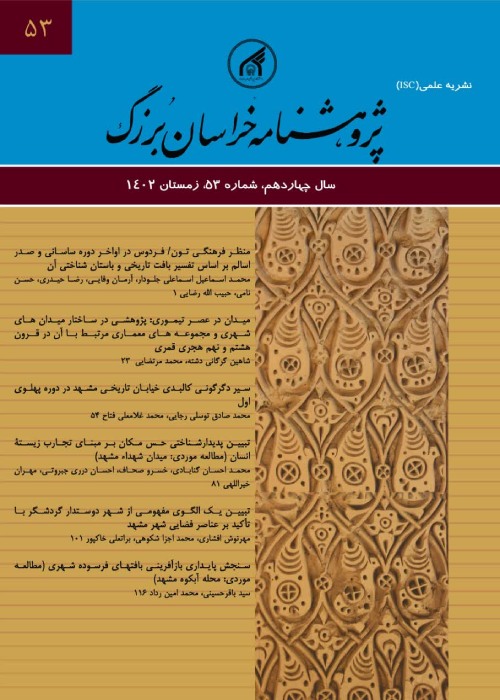Study of the Scripts and Decorations of the Kufic and Thuluth Inscriptions on Iranian Metal Containers in Seljuk Territory
Article Type:
Research/Original Article (دارای رتبه معتبر)
Abstract:
Seljuk metal containers represent one of the most exclusive developments of inscription design in Iranian works of art. In this research, the metal containers with inscription belonging to early fourth to early seventh/tenth to thirteenth centuries, which the researcher has been able to gain access to their pictures, have been studied. All the inscriptions of these containers have been inscribed with Kufic and Thuluth scripts and with different types of ornaments. This article has been written with descriptive-analytical method and is aimed at identifying various Kufic and Thuluth inscriptions on metal containers of this period. In this research, the basis for categorization of the inscriptions has been the type of script, the design structure of the letters, and the decorative styles used in them. Two different styles are seen in the Kufic inscriptions that consist of more subsidiary decorative types. The first style includes scripts, in which variations of script thickness are not noticed and are more inscribed with inlay techniques on the metal containers of this period. This style of Kufic scripts includes three decorative types of foliated, foliated knotted and anthropomorphic knotted. The second style includes scripts in which the designing of each letter has a different form in respect to its position among other letters; in this style, some of the letters are designed with a different geometrical structure and more circles are seen in it. From a decorative point of view, these inscriptions are categorized in three modes of circular (plain), foliated, and knotted. The scripts that are mentioned as Thuluth in this research are the outcomes of the influence of Naskh and Kufic and are designed during the passage period to developed Thuluth scripts. In these inscriptions, the combination of script and image are varied from plain styles and without decorations to styles that show the full mastery of illustration of these periods. In plainer samples, only the anthropomorphic-zoomorphic forms are added to the end of the vertical letters; but in more complex samples, the intensity of intermingling of script and human and animal forms have gone so far as illustration borders and, in fact, reveal the meeting point of literature, illustration, and mystical ideas governing the society through inscription design on metal objects.
Language:
Persian
Published:
Journal of Greate Khorasan, Volume:7 Issue: 25, 2017
Pages:
29 to 50
magiran.com/p1791788
دانلود و مطالعه متن این مقاله با یکی از روشهای زیر امکان پذیر است:
اشتراک شخصی
با عضویت و پرداخت آنلاین حق اشتراک یکساله به مبلغ 1,390,000ريال میتوانید 70 عنوان مطلب دانلود کنید!
اشتراک سازمانی
به کتابخانه دانشگاه یا محل کار خود پیشنهاد کنید تا اشتراک سازمانی این پایگاه را برای دسترسی نامحدود همه کاربران به متن مطالب تهیه نمایند!
توجه!
- حق عضویت دریافتی صرف حمایت از نشریات عضو و نگهداری، تکمیل و توسعه مگیران میشود.
- پرداخت حق اشتراک و دانلود مقالات اجازه بازنشر آن در سایر رسانههای چاپی و دیجیتال را به کاربر نمیدهد.
In order to view content subscription is required
Personal subscription
Subscribe magiran.com for 70 € euros via PayPal and download 70 articles during a year.
Organization subscription
Please contact us to subscribe your university or library for unlimited access!


